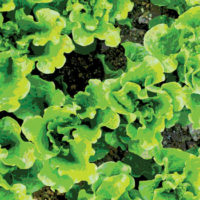Successful Sampling, Part II: A Brief Primer on Biological Sampling

In the last issue (August/September 2004, Food Safety Magazine), I presented an overview of sampling strategies that can be applied to any situation. Permit me to continue on this theme, but ratchet it up a notch or two. Please bear with me while we tackle that most enigmatic and ambiguous subject: biological sampling.
Historically, we in the regulatory community are called upon to perform sampling for the good of the public health. And indeed, we do a reasonable job taking single samples of potable water, storm water runoff, mosquito larvae and granary pests; comminuted meats, ice cream and other dairy products for fat content; vegetables and fruits for sulfite and pesticide adulteration; and the occasional hazardous chemicals kept in unlabeled pop bottles, just to name a few. However, when we get into the big leagues and are asked to sample for airborne and surface microbes, it soon becomes apparent that our profession does not have a good grasp of the art and science of monitoring for biological agents other than molds.
Most of us were neither trained in environmental microbiology nor in the instrumentation used in this science. Not surprisingly, we turn to the familiar and hope for the best. This means that we rely on the sampling technologies used by industrial hygienists rather than those developed by the biomedical and pharmaceutical industries for validation of cleanliness, and we manipulate each sample as if it were an enriched clinical specimen like those found in a hospital pathology lab, rather than one coming from a severely stressed environment. Not that this approach is entirely wrong, but it will not—nor can it—give us the answers we seek, and for that matter, it cannot provide any level of confidence. If we do manage to find anything relevant, it is more the result of luck than the application of good science. Unfortunately, this approach has become the norm in many food-related quality control (QC) efforts.
For this reason, I would like to provide a brief primer on environmental air and surface sampling, beginning with some of the fundamentals of environmental microbiology. If nothing else, I hope that this information serves as a starting point from which to ask appropriate questions in designing an environmental sampling scheme for microbial contaminants. This first segment will focus largely on the science and theory of biological sampling. In the next issue, Part III of this article series will focus on instrumentation and technique, including some innovative technologies.
The Science of Sampling
There are four cardinal premises in environmental microbiology. Understanding the rationale behind these truisms will have a significant and positive impact on your choice of sampling tools, analysis and ultimately, accuracy in data interpretation.
Premise 1: Most microbes do not survive well outside of their natural environment or growth site. For instance, a potential pathogen that thrives in the gut of animals, where it has an enriched, warm and moist environment, does not do well on a dry, cool surface or in low-humidity air of refrigerated or ambient temperatures. Organisms found in the air or on surfaces are usually stressed and die off relatively rapidly; their survival is largely time dependent and subject to the stresses of the environment. We therefore expect to find a greater number and variety of microorganisms of interest associated with recent activity versus the number and types found in an area that has seen little to no activity for some time.
Premise 2: Microbes are found everywhere, in virtually every environment, both natural and man-made. When sampling, expect to find non-target organisms that may be far more robust than those you are looking for. Expect the unexpected. Yet, finding microbes does not necessarily mean that there is a problem, except in a cleanroom environment. Everything is relative and we must caution against interpreting data as a problem where the environment is quite normal and no problem exists.
Premise 3: There is no uniformity of distribution of environmental microbes. Different environments differ with respect to quality and quantity of microbes. The greater the proximity to an aerosolizing source, the greater will be the number of microorganisms. Additionally, because microorganisms have mass, they behave like most particulates. More organisms will be deposited on horizontal rather than on vertical surfaces; more on the floor than on the ceiling. The same axiom of distribution holds true for growth conditions. As a rule, more microbes will be found where conditions favor their growth and reproduction than in one which does not. If you have to bias any sampling, favor those conditions in which there is food, moisture and a temperature more suitable to microbes. Also worth remembering: Because there is no uniformity of microbial distribution, there can be no duplicate samples.
Premise 4: Each environment can be considered a separate biosphere, each with a characteristic bioburden. Therefore, we need to define the “bioload” (an estimate of their number and type) for each environment or portion thereof we want to sample or evaluate. These estimates will guide us to the appropriate collection and analytical methodologies, and serve as a template for data interpretation.
Applying Sampling Theory
Sampling strategies differ for each application. QC sampling is quite different from sampling for forensic and regulatory reasons. Each application requires varying degrees of sampling sophistication and approaches to data analysis. The instrumentation used in sampling, must therefore be judged in terms of its capability to collect microbes under different operating conditions while minimizing the environmental stress on the organisms collected. There is no single sampling method that is suitable to all occasions.
To better illustrate this point, consider the differences in microbiological air samplers. These sampling devices are characterized by mode of capture, flow rate and flow characteristics, and collection efficiency as a function of particle size and shape. As a rule, aerosol collection methodologies that exhibit the lowest shear-forces collect samples in which microorganisms have the highest viability. Conversely, these same samplers usually have the lowest physical efficiencies in terms of the numbers of airborne particles collected. Basically, the efficiency of collection depends on the sampling method used.
Because the primary objective of any sampling program is to produce a set of samples that are representative of the source under investigation, we need to consider sampling conditions, sampling time and sample size as limitations in our data collection scheme.
Collecting representative airborne and surface microbial samples is the most difficult goal to achieve. Apart from the inherent absence of microbial uniformity, there is the problem of ensuring that particles of all sizes have an equal probability of being collected. This problem can be partially addressed in aerobiological analysis when the sampling rate is chosen so that the velocity of air entering the sampler inlet equals the velocity of the air being sampled. Achieving or approaching isokinetic sampling conditions is particularly important in areas in which the air sampling is done under dynamic conditions. If the velocity of the air entering the sampler is greater than that of the room’s air movement, small particles will predominate because they move more easily across the streamlines of the sampling equipment. Conversely, if the velocity is slower, larger particles will predominate because, unlike smaller particles, they do not follow the curvature of the streamlines around the sampler’s inlet. Anisokinetic sampling may result in sampling errors that range from 20% to 300%, depending on particle size and environmental conditions. Ideally, to avoid the effect of dynamic air movement on the capture of microbial aerosols, stagnation point sampling should be considered. In the absence of any air movement, smaller particles are efficiently captured and a particle-size profile can therefore be estimated.
To further complicate this issue, consider the following: Air is not a natural environment for most microbes. Survival of microorganisms in air is affected by a large number of environmental factors, the most important of which are temperature and humidity. Under natural conditions, these factors operate simultaneously. Consider also that force is required to generate an aerosol and likewise, to capture particles within that aerosol. These forces can damage or even fracture the fragile structures of vegetative microbes. The fragile nature of airborne microorganisms is largely species dependent and is determined by a host of physiological conditions. Once airborne, microbes become stressed through desiccation or hydration upon landing on a wet surface. Radiation, oxygen, ozone, and various other gaseous and particulate pollutants, if not lethal, may further stress these organisms. Some stressed and injured microorganisms may fully recover when given a suitable environment. This property of reversible injury or repair in microorganisms is widespread, and the implications of it are important in choosing the testing protocol.
Analytical Considerations
The agar medium selected for use in all microbiological sampling devices should be fresh. It should be prescreened for sterility by placing it in an incubator at 36C for 24 hours. When conducting an initial microbial assay, malt extract agar is recommended for the general detection of fungi, while agar containing casein peptone, soy peptone and sodium chloride is used for bacterial sampling. Trypticase soy agar has probably the most universal applicability for the collection of aerobic bacteria and fungal species, whereas for the detection of anaerobic species, a thioglycollate medium is recommended. As a group, these media are more quantitative than qualitative.
On the other hand, there are media specific to qualification or organism specificity. Once the bioburdens are established and greater specificity is required to target certain organisms, specialized agars containing antibiotics and/or other inhibitory and growth-regulating compounds are available from commercial sources. The use of these selective media may severely hinder collection efficiency and are generally inhibitory to small inocula, even of the organisms for which they are “selective,” by retarding recovery of those that are injured or stressed.
Because the organisms found in the environment come from different sources, the temperatures used to enhance their growth on an artificial medium should approach that of their normal habitat. Most organisms of interest fall within two distinct temperature preferences. The psychrophilic organisms, or those that prefer cold, thrive at low temperatures between 0C and 30C (32-86F), while the mesophilic organisms prefer moderate temperatures between 15C and 43C (59-109F). Therefore, to recover the maximum number of organisms in any sample, consider incubating the medium at 22C for 24 hours (or 48 or 72 hours, as necessary) to recover psychrophilic organisms, immediately followed by incubation at 36C to recover the mesophilic organisms.
The outcome of a well-planned sampling strategy depends on good science, logic and, to a lesser degree, a measure of good luck. Taking the time to estimate the types of organisms that may be present; describing the static, dynamic, and physical characteristics of the area under test, and conducting a viable/nonviable–particulate profile of the area to be sampled will yield data that becomes the basis for the entire microbiological sampling scheme. Because there is no single agar medium on which all microorganisms will grow, no single incubation temperature that will encourage all growth, and no single assay procedure that can completely characterize the microbial contamination in all environments, there is no universal sampling device or methodology. In the next issue, we will examine air and surface sampling instrumentation and methodologies.
Forensic sanitarian Robert W. Powitz, Ph.D., MPH, RS, CFSP, is principal consultant and technical director of Old Saybrook, CT-based R.W. Powitz & Associates, a professional corporation of forensic sanitarians who specialize in environmental and public health litigation support services to law firms, insurance companies, governmental agencies and industry. For more than 12 years, he was the Director of Environmental Health and Safety for Wayne State University in Detroit, MI, where he continues to hold the academic rank of adjunct professor in the College of Engineering. He also served as Director of Biological Safety and Environment for the U.S. Department of Agriculture at the Plum Island Animal Disease Center at Greenport, NY. Among his honors, Powitz was the recipient of the NSF/NEHA Walter F. Snyder Award for achievement in attaining environmental quality, and the AAS Davis Calvin Wagner Award for excellence as a sanitarian and advancing public health practice. He is the first to hold the title of Diplomate Laureate in the American Academy of Sanitarians, and also is a Diplomate in the American Academy of Certified Consultants and Experts and with the American Board of Forensic Engineering and Technology.
Dr. Powitz welcomes reader questions and queries for discussion in upcoming columns, and feedback or suggestions for topics you’d like to see covered can be sent to him directly at sanitarian@juno.com or through his website at www.sanitarian.com.
Looking for a reprint of this article?
From high-res PDFs to custom plaques, order your copy today!








